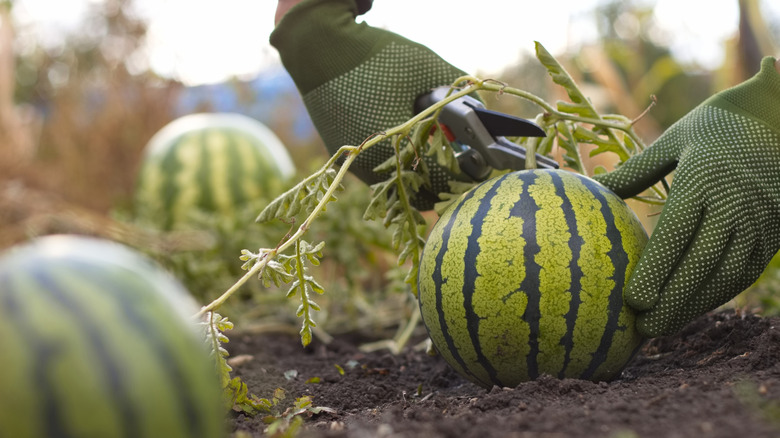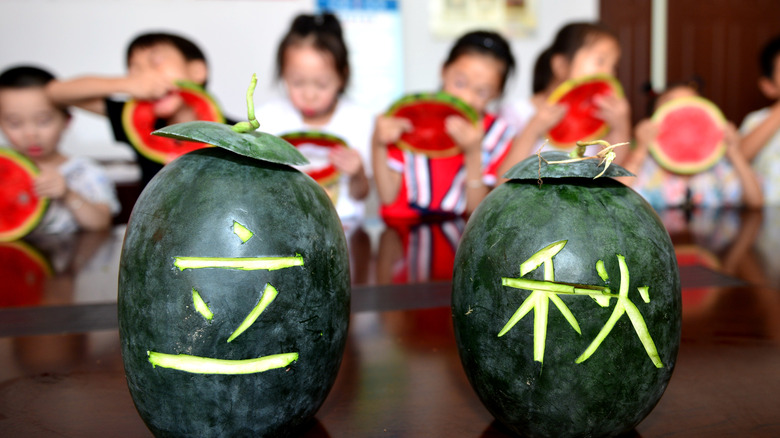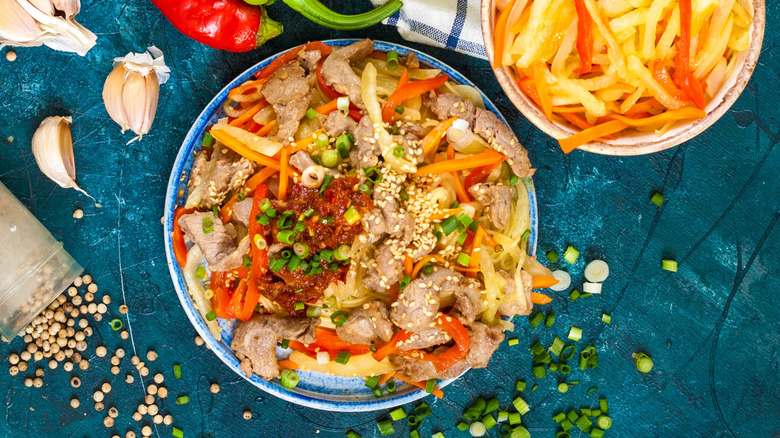Which Country Produces The Most Watermelon In The World?
While many fruits and vegetables are cultivated just in specific areas or are particular only to certain cuisines, watermelon is not one of them. It should perhaps come as no surprise that this glorious melon, with its green rind and juicy flesh, is grown all over the world. While not quite the most cultivated fruit globally, it does come in at number three — behind tomatoes and bananas — with over 100 million metric tons harvested each year. But where is all of this watermelon grown?
Again, it may be no surprise to learn that the country that produces the most watermelon is also the country with the largest general agricultural production in the world: China. While it may not surprise you to learn that China grows the most watermelon, the statistics on exactly how much is grown there are baffling.
In 2022, China harvested over 60 million metric tons of watermelon. That is a lot of fruit. But to really understand the scale, you must look at the number two producer, Turkey. The Turkish watermelon harvest that same year came out to a total of 3.4 million metric tons. Not only did China grow the most watermelon, it grew nearly 18 times as much as the next closest producer. In fact, if you recall that the global production of watermelon is just over 100 million metric tons, that means China produces about 50% more watermelon than the rest of the world combined.
How watermelon arrived in China
With such impressive statistics, you might assume that watermelon originated in China, but this is not the case. The first archaeological remains of watermelon come from Northeast Africa and date back over 5,000 years.
As is the case with many modern fruits and vegetables, the original watermelon fruit looked very different than it does today. The ancestor to the modern watermelon was a small, round fruit with a thick rind and bitter flesh. But what it lacked in sweetness, it made up for in usefulness. Watermelon was first cultivated not for its flavor, but as a water source — a very useful tool for the desert dwellers of Northeast Africa.
While there is evidence that watermelons were cultivated in Egypt as much as 4,000 years ago, watermelons did not arrive in China until the 10th century, coming across the Gobi Desert on the Silk Road. By the time watermelon made it to China, thousands of years of selective breeding had left its bitter ancestor behind and produced a sweet fruit that quickly caught on with individuals of wealth and status.
These days, watermelon is, of course, available to all in China and is universally adored. In fact, the annual per capita watermelon consumption in China is around a staggering 110 pounds — the highest in the world.
How watermelon is eaten in China
Given the inventive cuisine of China (as well as the sheer quantity of watermelon eaten), you might expect watermelon to be prepared differently there — but you would be wrong. For the most part, watermelon is eaten in China just like it is in the U.S.: sliced and eaten fresh for its cool, sweet, refreshing taste.
That said, there are a few interesting Chinese watermelon recipes that you might not have heard of. For example, xi gua lao is a beautiful pink watermelon jelly that is a traditional dish in Beijing. But most of the Chinese culinary innovation with watermelon comes from the parts that are typically discarded in the United States.
In the U.S. there are occasional deviations from the norm, like grilling watermelon burgers or making watermelon rind pickles, but mostly Americans just eat the flesh and throw away the rest. In China, this is not the case. The watermelon rind is often used in a savory stir-fry dish called là chǎo xīguā pí, where it is cooked with ingredients such as soy sauce, chili garlic paste, and black vinegar, before being served over rice.
As for the seeds, they are often eaten the way Americans might eat sunflower seeds, cracking the shells with their teeth to remove the kernel and then spitting the husk on the ground. One thing is clear beyond any shadow of a doubt: From the massive cultivation and consumption to the creative ways in which it is prepared, China is a country that loves its watermelon.


